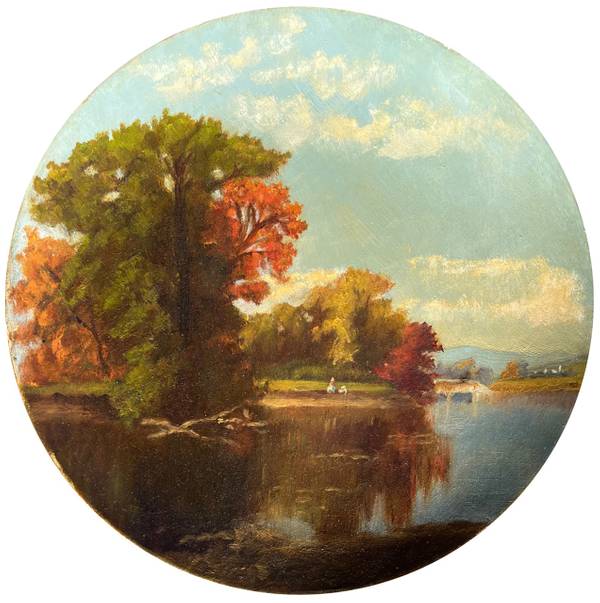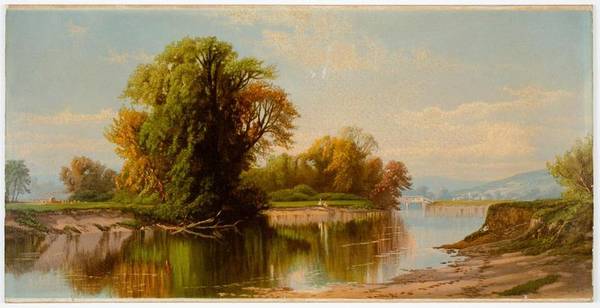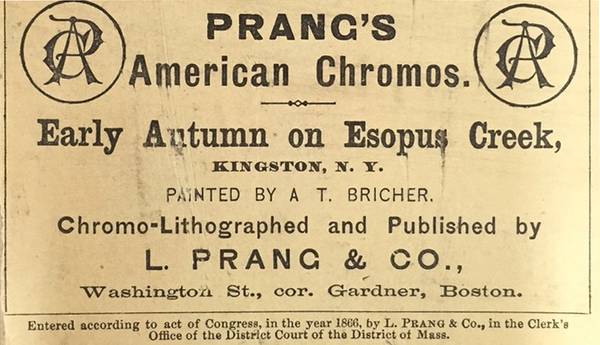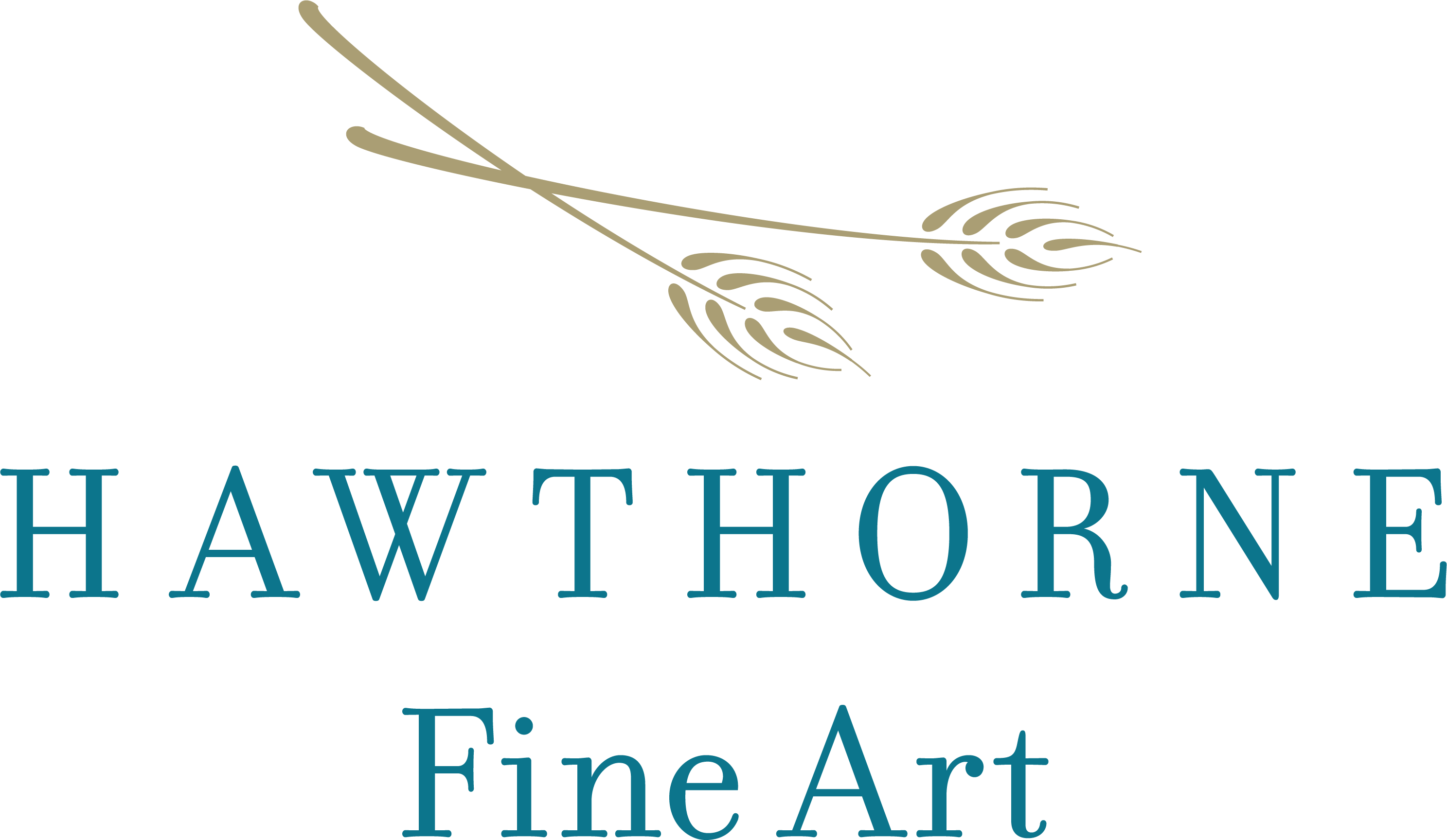Abbie C. Thurber (1830-1898)
- Abbie C. Thurber (1830-1898)
- After Alfred Thompson Bricher (1837-1908)
- Early Autumn on Esopus Creek, Kingston, N.Y.
- Oil on composition board
- 12 inches diameter
- Signed and inscribed with title on verso
Abbie C. Thurber was born in Providence, Rhode Island to Eliza (Beedle) and John G. Thurber, a master carpenter and ship builder.[1] In 1842, her father launched a ship camel from his dock. Invented by the Dutch and used throughout Europe, ship camels aided large vessels in crossing shallow waters. The introduction of this naval architecture by Thurber was the first of its kind in the United States. It provided much needed assistance to whaling vessels navigating the shoals of Nantucket Harbor.[2]
While little is known about Thurber’s life, according to archival Providence City Directories, she was active as a portrait and landscape painter for nearly two decades starting in the late 1870’s.
Thurber’s Early Autumn on Esopus Creek, Kingston, N.Y. is painted on a shallow dish made of composition board. Thurber used china painting, primarily a woman’s craft, to create a Hudson River School painting. As a model Thurber used the work of Alfred T. Bricher whose painting of Early Autumn on Esopus Creek, Kingston, N.Y. was published as a chromolithograph by L. Prang & Co. and would have been widely available.



